Wheat cultivation technology from preparation for sowing to harvest
Wheat accounts for about 35% of all world cereal crops. A valuable food and fodder crop requires increased attention during the growth period and strict adherence to agricultural practices. The grain is capable of producing a good harvest on a wide range of agricultural land in relatively cold regions.
All about the technology of cultivation of wheat, about its cultivation on an industrial scale and on a personal plot, read our article.
The content of the article
In which regions is wheat grown
Relative unpretentiousness and undemandingness to weather conditions make it possible to cultivate wheat in different regions of Russia... The leaders are the Stavropol and Krasnodar Territories, where about 22% of the country's total crop is harvested. In second place are the regions of the Central Black Earth Region, the Volga Region and Altai.
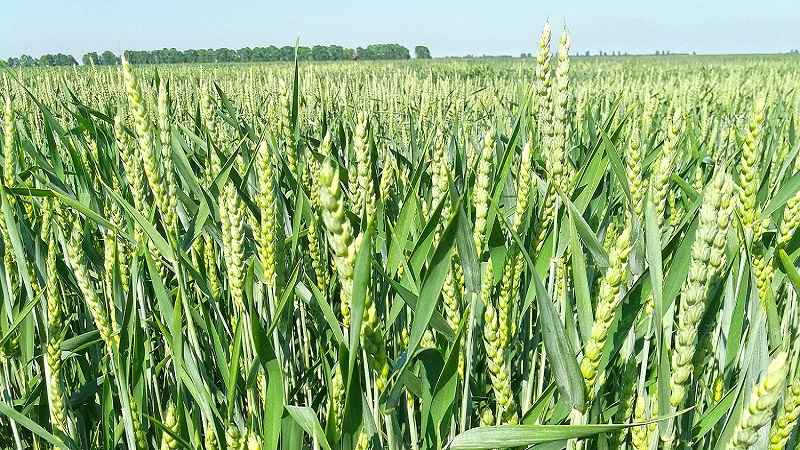
Growing at home
The population grows wheat in their summer cottages and farmsteads for livestock feed, flour for homemade bread, as siderata to enrich the soil with nutrients and improve its structure. The grains are germinated for use in healthy green shoots.
On an industrial scale as a business
Wheat is one of the most important agricultural crops and will always be in demand in the food industry and animal husbandry.
When drawing up a business plan, it is worth considering:
- the climate of the region;
- expenses for the purchase of seeds, equipment, fertilizers;
- timely harvesting and storage of grain;
- straw processing, grain sale.
Optimal growing conditions
Cultivation of crops in a warm continental climate, steppe zones, shows the highest results in terms of volume and quality. Seeds germinate at + 1-2 ° C, germinate at + 3-4 ° C. Full growth is already observed at 12-18 ° C.
Wheat develops well and matures in years with a lot of warm sunny days... With a lack of light, the cereal grows too bushy, does not gain the required height, is prone to disease, and loses its stamina.
The plant prefers sod-podzolic and sandy loam soils. Peat bog lands are also suitable for cultivation. The best soil indicators:
- acidity - from 5.8;
- humus content - at least 1.8;
- potassium and phosphorus - from 150 mg per 1 kg of soil.
Indicators are determined by agrochemical analysis soil samples.
Crop rotation rules
Wheat is sown on a new plot every year, since its reuse will lead to land depletion and an unfavorable phytosanitary condition.
The cereal will grow well after corn, legumes, oats, rapeseed, crucifers, vegetables and potatoes. The use of green manure perennials and annuals as precursors will be justified: lupine, vetch, mustard, phacelia. These plants enrich the soil with readily available nutrients, for example, legumes - nitrogen, suppress weeds, and reduce the level of spores of fungi that are dangerous for wheat.
Reference. The minimum interruption of exploitation allotted with wheat is two years. Do not sow after barley, as these crops have the same diseases.
Varieties
All groups cultivated in Russia are divided into spring and winter crops.... First of all, they differ in terms of sowing.Spring crops are sown from early spring to early summer.
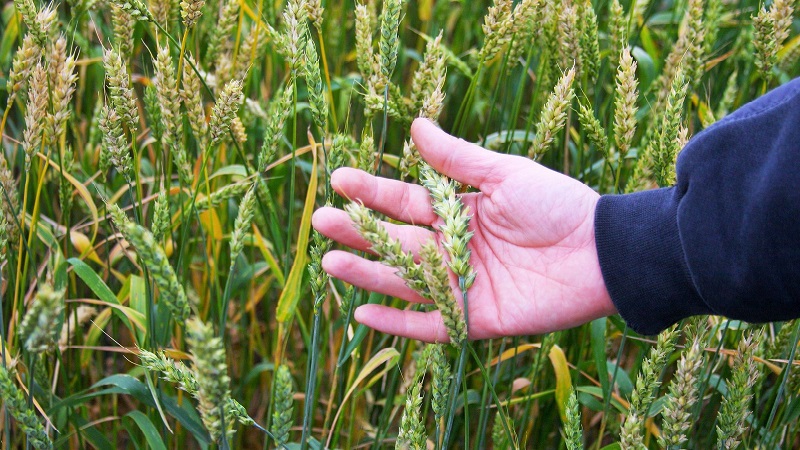
Examples of the most popular spring varieties and hybrids:
- Trioso - medium-sized, up to 20 spikelets per ear. Sowed in the non-black earth, the central region, the North Caucasus. Productivity - up to 80 kg / ha.
- Novosibirskaya 31 - medium early, with a growing season of 95 days. It is resistant to drought and lodging, yields up to 36 c / ha.
- Irene - mid-early hybrid, considered a valuable variety for its high levels of protein, vitamins, gluten.
- Uralosibirskaya - a mid-late variety with a yield of 22-51 c / ha. Cultivated in the steppe and forest-steppe regions.
Sowing time for winter crops - August-end of October... Most Popular varieties:
- Antonovka - vegetation period up to 280 days, height about 1 m. Resistant to drought, temperature extremes.
- Lennox - matures in 300 days, is not affected by most diseases. Grain yield - up to 90 c / ha.
- Tanya - resistant to diseases and sudden changes in weather. Does not crumble, has a high nutritional value.
Varieties are classified according to biological differences on solid, soft.
Soft grains are white or red... Flour from it is obtained with a low gluten content, more crumbly. Usually used in bakery and confectionery industries. Examples:
- Ilias - resistant to lodging, the yield reaches 75-85 c / ha. A rare variety that can be sown after all cereals.
- Lars - frost-resistant, mid-season, gives 70-90 centners per hectare of grain.
- Favorite - a valuable winter variety, but requires watering. Productivity - up to 90 kg / ha.
Soft varieties are more often grown in Russia due to their high yield.
Hard varieties are inferior in quantity, more demanding on moisture... Raw materials are used for pasta, since there is more gluten in it. Popular varieties and hybrids:
- Kubanka - late, spring. Sown mainly in the North Caucasus.
- Beloturka - spring. Cultivated in the Volga region and other steppe regions.
- Black spikelet - is distinguished by high drought resistance due to its powerful root system.
- Meljanopus 26 - mid-season hybrid bred specifically for the production of pasta.
Grains of any varieties that have not passed quality control and are not suitable for productionare called feed wheat. It is used as animal feed.
According to the degree of crushing, grains are divided into:
- semolina;
- wheat - the roughest processing method;
- flour - maximum grinding.
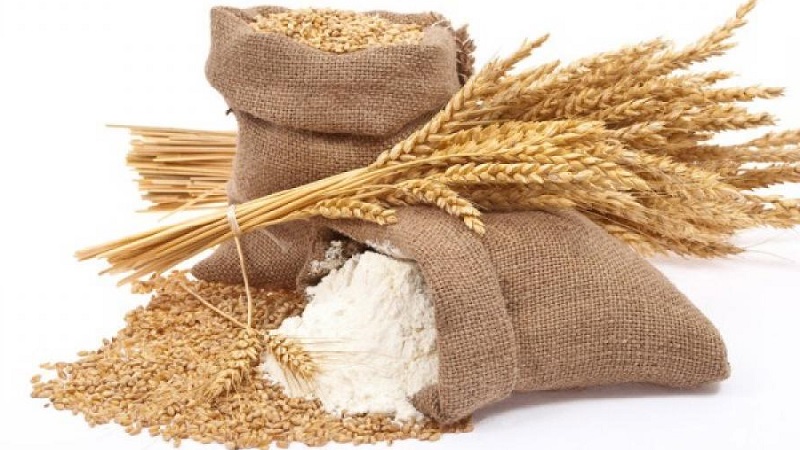
Preparation of soil and planting material
Before sowing spring and winter wheat, the land is equally cleared of weeds by processing with tooth harrows, in especially arid regions - with needle harrows.
Land preparation aims at crushing and incorporating crop residues from past crops, aeration and leveling. If perennial grasses have been growing on the field for many years, then they are plowed with disk plowing, then with ploughshare.
Processing of arable land for wheat consists of harrowing and cultivation... The surface must be compacted, without large lumps. This will increase the area of contact between the grains and the soil, and ensure the friendship of seedlings. Winter tillage promotes the accumulation of moisture, suppresses the development of weeds.
Before sowing, seeds are treated with fungicides with microelements, for example, Yaros, Liszt Forte, Raxil, to reduce the risk of disease. Sometimes this stage is combined with incrustation - the process of covering the grains with a polymer shell of sodium salt, polyvinyl alcohol, carboxymethyl cellulose and water.
Growth regulators and trace elements are added to the composition: "Plantafol", "Aquarin", "Emistim S". As a result, the grains become more hardy, sprout en masse, in the future there will be no need to spray the field with chemicals. Large batches of grain are processed in liquid tanks and dried.
Growing technology
Agricultural technology for growing wheat includes preparation of the site, adherence to the terms of embedding, feeding and cultivation.
Sowing
Seeders are used for sowing large areas... For most varieties, the consumption rate is 160-250 kg / ha, so that for 1 sq. m had 500-700 productive stems.
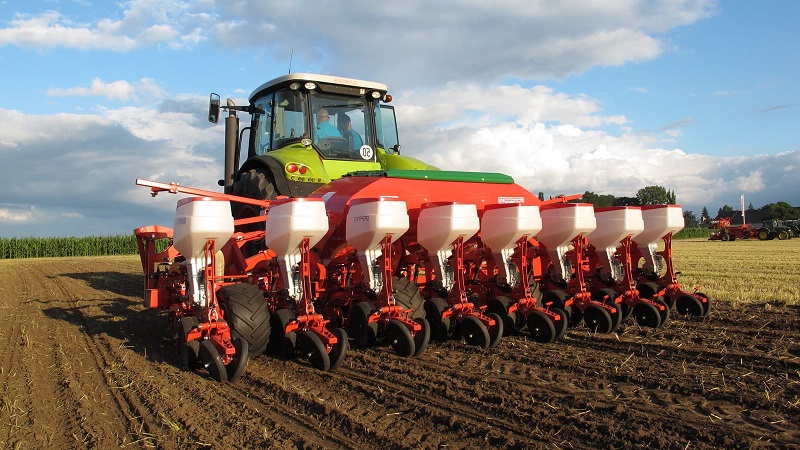
Sowing dates depend on the characteristics of the variety, climatic factors. Winter crops begin to sow on average in the second decade of September, spring - in early spring. On relatively poor soils in composition, work is carried out in early autumn, on highly fertile soils closer to winter so that the plants do not overgrow.
Winter crops hibernate with 2-3 shoots, which grow two months before the cold weather.
Care
For spring wheat, the following types of work are carried out:
- 5-7 days after sowing, harrow with light cultivators;
- with an excess of weeds, they are sprayed with herbicides, for example, "Secator", "Demeter", "Bucephalus";
- treated against possible pests with insecticides of a wide range of actions, in particular, "Engio", "Karate Zeon";
- when detecting foci of infection with pathogens - such fungicides as "Amistar Trio", "Alto Turbo", Soligor ".
Winter crops require:
- high-quality pre-sowing land cultivation;
- nitrogen application before sowing (35 kg / ha);
- the presence of snow cover;
- spring harrowing for destruction of dry crust, suppression of weeds.
With a lack of moisture, irrigate with sprinklers abundantly once after main plowing and in the prolonged dry season in summer.
Harvesting
Winter crops are harvested at full maturity... The term depends on climatic conditions, but usually falls in June-July. Harvested most often by combines. The separate method - mowing, laying in swaths for drying, and then harvesting by machines - is applicable for a large volume of weeds, as well as for tall and very dense varieties.
Spring crops are harvested at the early stages of biological ripeness (grain moisture 25%). If the grain is overdue for more than a week, then the quality of raw materials will deteriorate, and yield will decrease. Harvesting begins in July, in the northern regions - in August and early September.
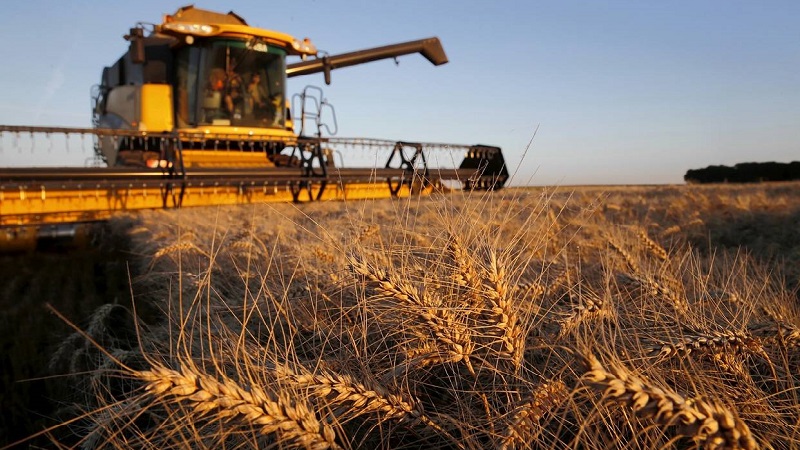
Disease and pest control
Wheat is susceptible to disease at all stages of the growing season... The most common:
- Dusty smut - infects the ear, develops in parallel and parasitizes the plant. It takes from 1 to 30% of the crop.
- Stem smut remains in the soil, migrates to young seedlings.
- Powdery mildew - affects plants in areas with moderate humidity, manifests itself as a white bloom, followed by necrosis and tissue death.
- Root rot - cause decay and death of the neck of the root system of the plant.
- Rust - affects mainly stems, leaves, slows down the growth and maturation of the ear.
Seed dressing with fungicides is the main control measure for pathogens... Further protection lies in the use of antifungal drugs (Flutriafol, Diniconazole-M, Benomil) for prophylaxis or treatment during the growing season.
To prevent the number of wheat pests from increasing, crop rotation is required... Spring crops are sown as early as possible. For spraying, permitted insecticides are used, for example, "Bishka", "Di-68", "Desant".
Most common parasites:
- Winter scoop - moth, the most dangerous agricultural insect. Its larvae hibernate in the soil, in the spring they eat up the germinating grains.
- Wheat thrips - a flying black insect with transparent fringed wings. First, it eats the scales of an ear, then damages the grains and lays eggs.
- Opomiza - cereal fly, penetrates the stems, feeds on cereal juice.
- Bread beetle - its adults eat up young grains, damage seedlings up to the death of the plant.
- Winter fly - makes laying in a young sprout. The hatched larvae live inside the shoots, which stop developing.
How many spikelets will grow from one grain of wheat
The average number of spikelets in a wheat bush is 16-22 pcs.... The productivity of an ear is increased by agrotechnical measures.
How much crop can be harvested from 1 hectare
Subject to all agrotechnical measures, 50-90 centners of grain are harvested from one wheat... The average indicator is 40 c, 10 c is extremely low.
Features of growing winter wheat
A plot of land for winter crops is chosen without lowlands and slopes, with protection from weathering... The soil should be moist, well fertilized - preferably black soil. Most varieties are frost-resistant (Mironovskaya, Kaluzhskaya, Barkhatnaya), but seedlings without snow die already at -15 ° C. The growing season from sowing is 270-350 days. They are sown in a row method with seed placement 6-8 cm in light soil, on peat soil - 3-4 cm, heavy - 1-2 cm.
Important! Spring fluctuations in temperature and frost after the start of the growing season can completely destroy the crop.
Winter crops fertilize several times per season with nitrogen-containing additives... Foliar top dressing on the leaf with a solution of carbamide (urea) in a proportion of 50 g per 10 l of water contributes to an increase in grain mass.
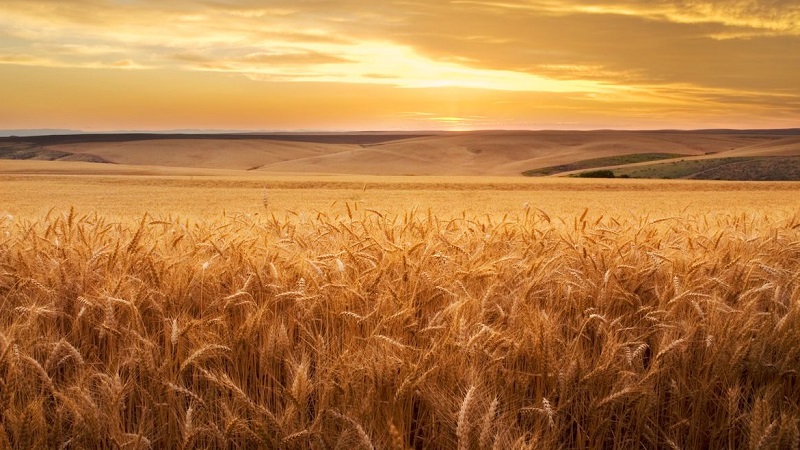
Spring
Spring wheat is ready for sowing at a soil temperature of + 2 ° C... Seeds are planted to a depth of 5-6 cm in light soil, in heavy - 3-4 cm. Traditionally, they are sown with a continuous or strip method.
During the tillering period, the introduction of mineral fertilizers begins, first on the basis of nitrogen, then phosphorus... In the phase of earing and filling of caryopses, potash dressings are used. At the same time, it is watered if there is a prolonged drought and the roots do not reach the moist layers of the soil.
Storage of the harvested crop
After harvesting, cereals are usually taken to elevators, procurement bases, transshipment warehouses, stock complexes.
Harvest safety is influenced by:
- temperature, air humidity in the granary;
- the presence or absence of pests and pathogens;
- the degree of grain ripening.
Wheat must be dried before storing.... The most favorable temperature is + 10-12 ° C, at which the grain cools down, biochemical processes stop.
Conclusion
Wheat has been and remains a strategically important food crop. It is appreciated for its high nutritional qualities, high yield per unit area. The variety of cereal varieties allows it to be cultivated in a temperate climate with average soil conditions.
Observance of the crop rotation provides optimal conditions for growth and development. Profitable cultivation of wheat requires significant costs for high-quality planting raw materials, strict adherence to the stages of agricultural technology.